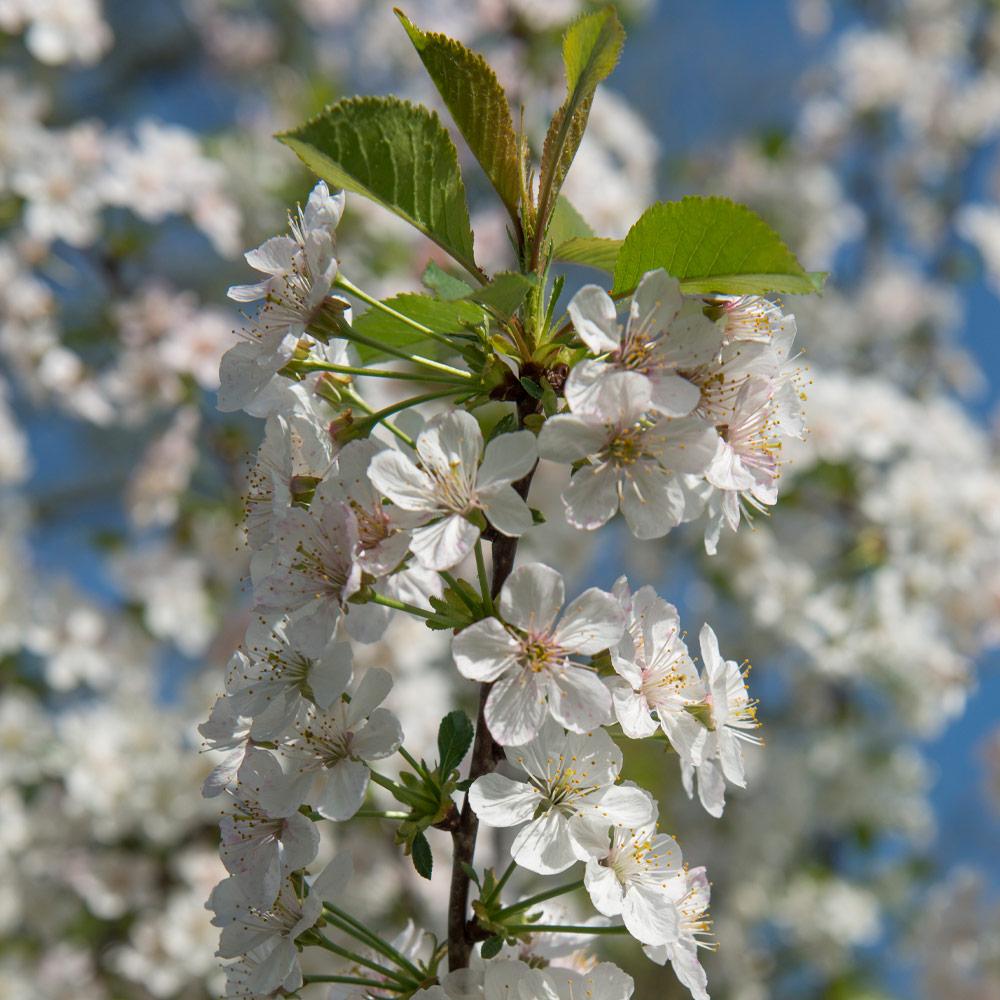Get Bushels of Cherries the First Year
Why Rainier Cherry Trees?
The Rainier Cherry Tree is a heavy producer, generating an early harvest of big, juicy cherries in its first year. And Rainier Cherries are some of the sweetest available. You've most likely bought these at your grocery store, as they're the most popular cherries in America.
Plus, it’s super easy to grow. This hardy tree can adapt to nearly any soil type, and though it requires cross-pollination to fruit, it’s simple to purchase and plant the Bing or Black Tartarian Cherry Trees for tons of cherries in the first year of growth.
Why Fast-Growing-Trees.com is Better
But the best part of the Rainier Cherry Tree? The fact that it’s delivered, ready to grow, straight from our nursery to your door. We grow our trees longer and monitor each variety meticulously, so they’re a proven performer when they come to your homescape.
We’ve put in the extra work so that you get a healthy, full-bodied specimen that produces year after year. Order your own Rainier Cherry Tree today – before it’s gone!
Planting & Care
1. Planting: The Rainier prefers full sun but will tolerate some shade - select a location that receives at least 6 to 8 hours of sunlight per day for best results. Also select an area with well-drained soil. When you're ready to plant, dig a hole that's three times the width of the root ball and just as deep. Place your tree, back fill the soil, tamp down and water to settle the roots. Spread a layer of mulch around the surrounding soil to preserve moisture.
2. Watering: During the growing season, if your tree receives at least an inch of rain every 10 days then no additional irrigation is necessary. If the season is hot and dry, then you may need to provide some additional water. The best way to water is by using a slow trickling garden hose left at the base of the tree. If you're not sure when to water, however, simply check the soil about 2 or 3 inches down. If the soil here is dry, it's time to water.
3. Pruning: A year after planting your Cherry Tree, prune during winter. Shape the tree to encourage horizontal branch growth with space between branches. And prune once a year as necessary to remove weak, drooping branches.
4. Fertilizing: Fertilize in the spring and mid-summer using nitrogen fertilizer twice annually, applying 2 weeks after planting and 4 weeks after the first application. Use a complete fertilizer such as 10-10-10 - fertilizer application ratios vary upon the formulation, so be sure to follow package directions. When applying, be sure fertilizer is 6 to 8 inches away from the trunk around the tree.
Tips: In colder climates, avoid fertilizing after mid-summer to prevent new growth that won’t harden before fall frosts.






Comment